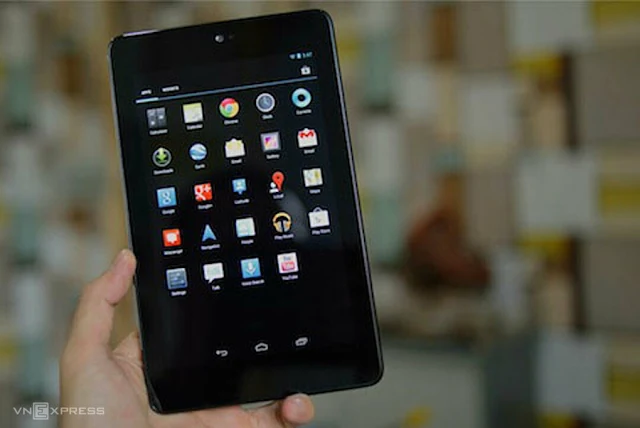Although it failed many times to enter the field of smartphone chips, Nvidia did not give up and silently appeared in another way.
Nvidia is emerging as a bright star of the technology industry. At one time, the company's value ranked first in the world, surpassing Microsoft and Apple. The company became a phenomenon thanks to the explosion of GenAI. However, before that, the company once made waves in the mobile industry and had ambitions to dominate the market but failed.
The attempt failed
Not many people remember Nvidia's presence in the phone segment. The company used to produce mobile chips but did not create a breakthrough. In mid-2010, Nvidia chips almost disappeared from the global mobile map. In 2012, the company returned with Tegra 3, the chip equipped on Nexus 7 - the first high-end tablet co-developed by Google and Asus. This model made a big splash, promoting Nvidia's comeback. A year later, Tegra 4 was born with significantly improved power and Nvidia expanded this chip with the release of the Shield handheld game console.
However, despite its strong performance scores, Tegra SoC is not widely adopted. Nvidia Shield also failed. CEO Jensen Huang quietly withdrew from the smartphone and tablet market in 2015.
The Tegra brand returned to the Nintendo Switch console in 2017. The Switch was a huge success, but the Tegra chip was still overlooked by smartphone manufacturers. Nvidia has not given up, continuing to bring Tegra X1 to the high-end Android TV box, fully supporting new technologies. Nearly a decade on, this is almost the only link between Nvidia and Android.
Silent presence
Meanwhile, Nvidia dominates the computer GPU market and directly benefited from the two Bitcoin fevers of 2016 and 2020. The decision to change the name of GTX graphics cards to RTX also created many good effects in the industry.
Initially, Nvidia's ray tracing technology initiative faced many mixed opinions. Later, reality proved that Jensen Huang was right, and this feature became an important pillar of modern GPUs. Mobile chips from Apple, Qualcomm, MediaTek and Samsung all currently use ray tracing for hardware acceleration. According to Android Authority, although not directly present, Nvidia still shows influence in the mobile industry.
In early 2020, Nvidia caused a stir with its plan to acquire chip company Arm for $40 billion. Arm's architecture is found in most mobile chips on the market from Apple A-series to Snapdragon. The deal was not approved by the US because of monopoly concerns. Nvidia has found a new way to enter the phone market when its GPUs are being used to train most of the AI models present on smartphones.
Companies like Google, Microsoft, OpenAI are all racing to integrate AI into as many products as possible. One of the factors that determine the power of this AI model is Nvidia's H100 and A100 GPUs.
Plan to return
Nvidia shows that they have not stopped giving up their dream of dominating the mobile industry. The company is preparing to compete with Apple, Qualcomm again. According to Reuters, Nvidia plans to introduce chips for Windows based on the Arm architecture next year, after the exclusive agreement between Qualcomm and Microsoft ends. In addition, some sources say Nvidia's Tegra T239 chip will appear on Nintendo's new game console.
If history repeats itself, the mobile industry will soon see the return of Tegra chips. Some sources say Nvidia has tested RTX Video Super Resolution and SDR-to-HDR features on its GPUs with impressive results.
According to Android Authority, HDR upgrades and conversions are also especially necessary on Android smartphones and tablets because they help improve the gaming and entertainment experience. However, Nvidia will face challenges when Qualcomm and MediaTek are also constantly improving. Whether it succeeds or fails, the company will still have a great influence in the field of AI, improving video and graphics for the phone industry in particular and the technology ecosystem in general.



